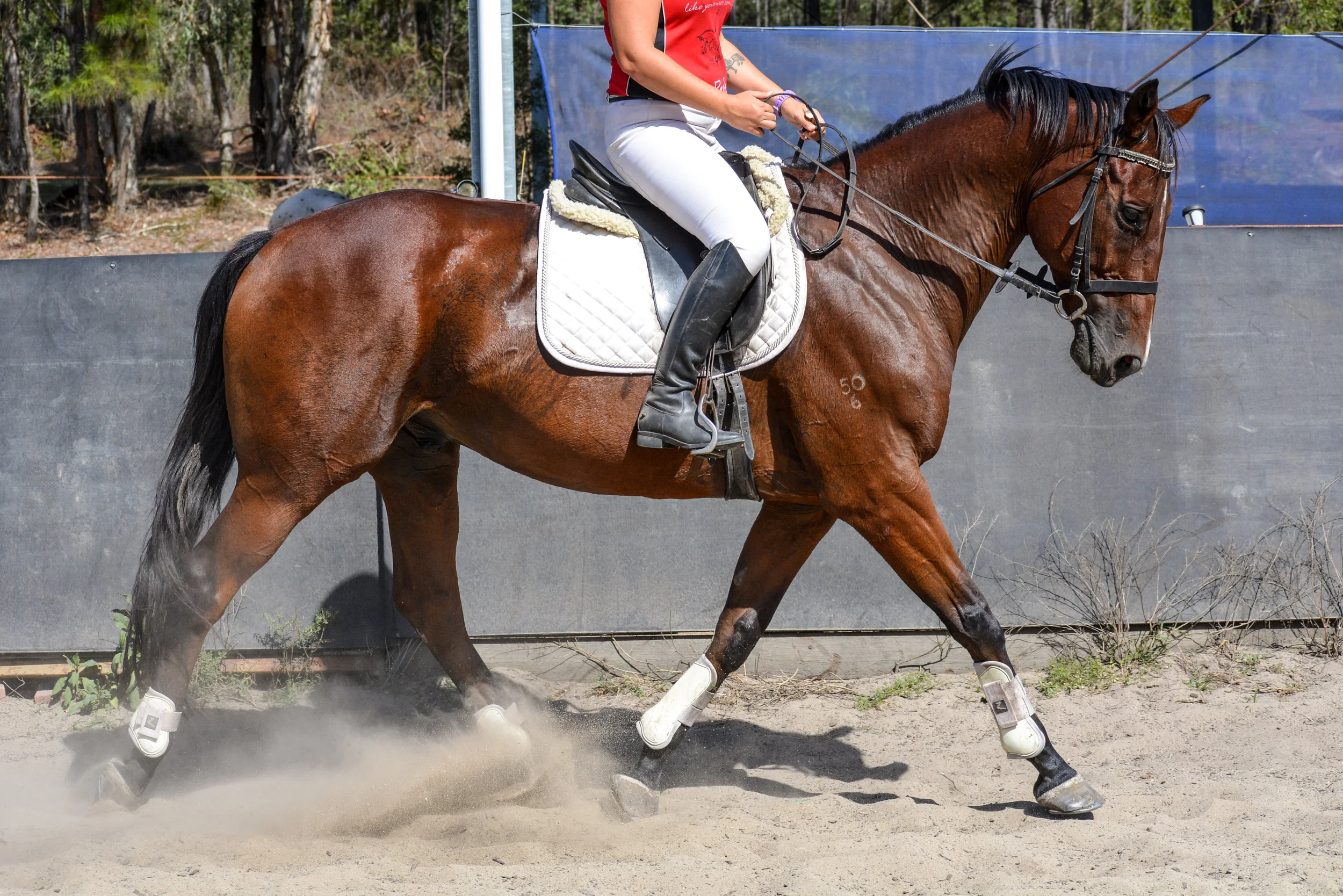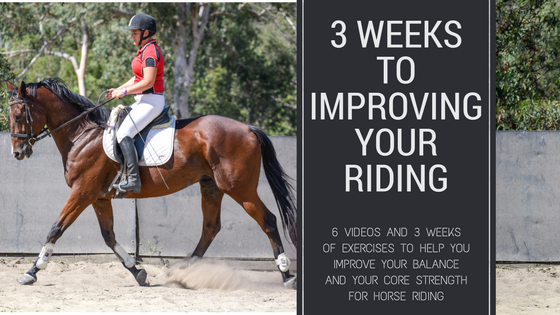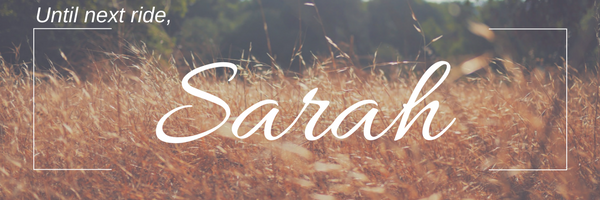Connection: Why you want it & how you can start getting it
Having connection isn’t the same as having contact, but they go hand in hand…
We hear about it. It’s a term used in the horse world frequently.
But really, what is connection?
Connection is taking the conversation we built on the ground and transferring it to the saddle.
Connection is a willingness of our horse to seek out that conversation with us and to do that it has to be through pressure they put into the bit and our body (ie legs and seat).
This conversation or connection is similar to that of a dance partner moving together as one. There are a lot of pieces of the puzzle to come together to get to that point.
Firstly, our horses need a positive relationship with the bit or bitless bridle pressure. If our horses haven’t had a good bitting or bridling experience, have pain where the pressure of the bridle is applied or have dentistry issues there is no way of establishing that connection.
We have to ensure our bridle is comfortable and that we aren’t trying to control the horse through the force of the bridle pressure.
There are quite a few things they also need for this.
They need to know to and how to seek the release of pressure;
They need to know that pressure goes away when they find the right answer;
And then they have to have had enough practice with the aids for bit pressure to know what behaviour makes them go away. Ie turning right makes right rein pressure go away, turning left makes left rein pressure go away, stopping makes 2 rein pressure go away and they have to be comfortable with that conversation.
Connection is also being able to say “no” and express their concerns and fears from what we are asking.
Our horses shouldn’t be forced to say yes sir, no sir, 3 bags full sir.
They need to be able to communicate if they don’t understand, can’t do what we are asking, are nervous or unsure etc. We start with this on the ground as well by opening up that conversation through consent, and the confidence to investigate scary things through targeting.
To become a good dance partner and establish flow and connection under saddle, both horse and rider have to be able to have a strong core and balance independently.
Quite often the horse or riders fitness is the limiting factor to that connection in the saddle. We establish this on the ground with lunging and in hand work and then bring it along in the saddle with our conditioning exercises to unite the movement of horse and rider.
Once we have a willing horse looking to have a conversation and a balanced horse and rider the connection comes from the horse working into and seeking the contact. Not sucking behind it, pulling through it, lifting above it. This is why it is so important not to force submission to the bit. Connection can’t be established through force and submission.
Want help developing a connection under saddle? Join our “Ride with heart” workshop that will be jam packed with tips on developing feel and connection in the saddle.
Join us live and ask questions!!
Your riding position influences your horse more than you think
Don’t believe it? Think again…
There’s always that one horse that nails a lesson home.
Growing up, I was like “Pfft - as if my position affects if my horse is on the forehand! It’s all about the aids”.
I spent time working on my sit trot, on my 2 point seat and looking good, but never really thought how my balance was affecting how my horse worked.
That was until I was working with a very athletic thoroughbred on our show jumping.
She had zero ‘go slow’ thoughts and for the level of training I had at the time, none of my riding tricks slowed her down and I refused to add stronger aids. I was taking my time and being patient with getting the steady button to work and then one night I decided to play around with my posture.
At the time I was working with the exercise physiologist on improving my posture and engaging my core, and it was because of this I decided to apply some of these techniques to the saddle. I was riding down the long side and with no other aids, I used my core to get more upright and balanced and hallelujah - she came up off the forehand and steadied the trot. I was so psyched and surprised at how effective it was!!
After that I practised more with this mare - she made it so obvious when I was doing it right and wrong! I then was able to translate that positional correction across to the other horses I had on training at the time. While the improvement was not so drastically obvious, it significantly improved their ability to come up into self carriage.
Since that day I have found this an invaluable tool especially when breaking and riding green, unbalanced horses.
Could your postural position need a tweak? Click here to see how you can improve your riding position in as little as 3 weeks.
Toes in, heels down - why you should reconsider your priorities
Sick of hearing “toes in”, “heels down” or the like?
We know that our riding posture is so important - if only to get those extra marks on our test!!!
But the postural corrections that we get corrected on (that are aesthetically pleasing) can get in the road of our core posture improvement; which in turn impacts how well our horse can balance and maintain self carriage without going on the forehand.
From the age of 7 I was getting 2 lessons a week, competing on the weekend and being critiqued on my posture regularly.
Heels down,
Toes in,
Legs back,
Shoulders back,
Look where you’re going.
I was always trying to make my position “look” better.
Lessons without stirrups,
Pulling my legs up learning to get deeper in the saddle,
Or hours on end practising the 2 point seat.
My biggest weakness was always rounded shoulders. It wasn’t until I started to work with an exercise physiologist after an injury that I learnt that posture and balance doesn’t come from tweaking arms and legs, but learning to use your body from your core.
The more self awareness and coordination you have from your core, the more balanced you are and the more control you then have over the rest of your body.
The thing about not knowing how to use your core and centre of gravity is that you curl and shrink your body down to try and gain your balance. The more you can isolate and engage your core the longer you can stretch your body and the straighter your upper body will be.
So at Equestrian Movement, our focus is first and foremost engaging the core and working on balance points that make us more independent in our riding - and then do the tidy up to look good. We want to stay out of our horse’s way so that they can move freely. We want to find the most important positional corrections that keep us on the horse, and THEN look good doing it.
It is why we made the course 3 Weeks to Improve Your Riding.
My students have done it and I have seen a huge improvement not only in their position and balance but also how well their horse works. The aids are clearer, firmer, more balanced and the horse is allowed to move freely.
The course contains 6 videos on how to ride from your core along with a 3 week exercise plan written by a PT to help you isolate and learn how to use you core.
Are you ready to improve your riding position? Click here to learn more.
7 Questions to Ask Yourself About Your Riding Seat
How can you tell if you have developed or improved your riding seat?
How do you know when you have a well established, independent seat?
Our riding can feel like a never ending process of self improvement (or struggle to success). I find that for a lot of students we are our own worst critic - and what’s more our peers are often not very positive either. Part of having a good independent, upright seat is understanding what it is, when you have it, how you achieve it, acknowledging you will never be perfect but knowing the key areas that you are working on to improve and rewarding yourself for how far you have come. Hopefully you can also have some cheerleaders that are supportive and encouraging of your development as well and not just trying to pull you down with negative comments.
When riding we want to transfer our balance, core and centre of gravity skills to the saddle. The better we get at maintaining good posture on the ground the better our posture will be in the saddle and more independent our seat will be. Where you are holding your horse from is also very important. It is impossible to get into a good, independent upright seat when you are tensing your inner thigh and rotating your pelvis down. Essentially our independent seat is all about strengthening and stabilising our legs, rotating our pelvis up and increasing the freedom and range of movement of our upper body.
When you manage to get the holy grail that is the synchronicity of your movement integrating and moving as one with your horses movement you will feel things like:
You sit more upright and feel your horse adjust itself and come into self carriage
When you get your seat into the right place and all of a sudden that aid that wasn’t working works
When you put more weight into one stirrup than the other and your horse shifts its balance
Your can pull your shoulder back and let the other go forward to turn and your horse follows without needing to use the rein
You can turn through your hips and pelvis and the horse knows where it is joining
You can shorten or lengthen the stride or ride a different pace just by the flick or adjustment of your pelvis and hip bones.
Most of the time, it doesn’t last. So we are always working towards getting better and holding for longer. You want to ride a positional correction before you ask for each movement to keep reengaging those postural and core muscles.
Here are 7 questions you should ask yourself to understand how your seat is working:
If you were to take the horse out from under you, would you still be standing up balanced?
When riding we don’t learn a whole new centre of gravity and balance. We take our already established posture, core, centre of gravity and balance from the ground and learn how to apply that to the saddle. The longer and taller you can hold your posture and the more freely you can move your upper body and legs in the saddle the more centred you are in your core.
If you were to take the reins off you and put your arms out to the side, would you still be balanced?
Our balance and stability in the saddle starts with our legs. If your legs aren’t stable under your body you will be using the reins and the horses mouth to balance yourself. If you can hold your arms out to the side and maintain your balance you will be using your legs and core and not the horses mouth.
Can you hold your 2 point seat (without holding the reins or mane) and not collapse into the saddle?
In our rising trot every second step we are standing out of the saddle. If your unable to hold yourself up in your 2 point seat without holding on with your hands there is a good chance your legs aren’t strong enough and balance is not centred enough to be holding your independent upright seat in the rising trot.
Can your ride different horses strides without losing your balance?
Challenge how good your balance is by riding other horses, especially trotters and warmbloods. The bouncier the stride, the more they throw you out of the saddle, the better you need to engage your core to stay with the movement.
Improve your independent seat
Click here to join the workshop in SE QLD April 6
Do you get bounced around a lot?
Getting bounced out of the saddle and sucked into the saddle has a bit to do with your horses level of education. If your horse is behind your leg they won’t help you with your rising trot and will suck you into the saddle. It could also mean your legs are too far forward. If you get thrown up out of the saddle and over the front of the saddle your horse may be moving unpredictably. You also may be hanging on too much with your knee and inner thigh creating a pendulum action with your lower leg.
Do your shoulders sit in front of your hips?
You won’t be able to tell unless you have someone tell you or see photo or video of yourself. Also you may have people always telling you shoulders back. Any degree of shoulders in front of your hips puts your horse on the forehand and results in you locking and bracing your elbows and pressing down on the reins to use them. It also means your hips and pelvis are rotated down and will create resistance from your horse to the bit.
Do your shoulder sit behind your hips?
Shoulders too far back is the result of hollowing your back or using your body weight to try and follow the movement and get your shoulders back rather than following the horses movement actively through your pelvis. This is most common in canter and sit trot and seen more exaggerated in riding the medium/ extended trot in sit trot. This results in a lot of concussion on your horses back and will make them hollow their back away from your seat. We want to invite their back up into our seat.
Improve your independent seat
Click here to join the workshop in SE QLD April 6Riding Posture - a Quick Tip That May Help
How good is your posture in the saddle?
What is your riding posture like?
Anyone who has ridden for a long time will probably say their posture is pretty good, especially if you training at a more advanced level.
But over time our posture can become a little lazy - and this is especially true if we have become riders as adults or taken a long break before returning. This happens for a number of reasons, such as being less focused on it, protecting pain, or just returning to a learned memory.
A good riding posture can sometimes be hard to feel. We are told to keep the line from shoulders/ hip/ ankle straight - which makes you stiff. We are told we need loose hips, which can disengage our core. We need to have soft hands, which makes our shoulders move forward.
A good riding posture is complex but once achieved, has an amazing benefit to our riding - and our horse!
I have been having a lot of trouble sitting back in the saddle - a combination of bad back, habit and desire to keep my hands soft. My elbows were stiff, my shoulders stiff, and although my hips were nice and loose (or so I thought), I still sat too forward. Katie recently prefaced an idea to me that made total sense and made a huge difference to my posture.
Imagine your collar bones as an oval around your shoulders. Now, position that oval over the top of your hips.
Instant change. My shoulders loosened and could move independently of the other, my elbows released, and I was sitting more upright and deeper into the saddle. Custard loved it too - he instantly began responding to softer, less exaggerated reign movements because the slightest change to my body was already cluing him to my next desired action - instead of the thousand mixed messages he was probably receiving up until then, the poor blighter!
So try it yourself- see if it makes a difference to your riding and your horse!
Or check out our e-course, where Katie goes more in-depth about the correct exercises to improve your seat and core!
Looking for more specific content?
Have a question you are seeking answers to? Send us a message and we will create a blog!











Improve your riding posture in 3 weeks with this fitness program designed for the saddle!